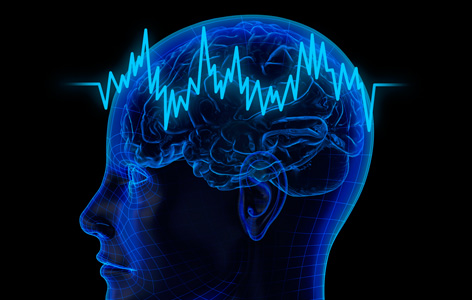
Brain cells communicate with each other using pulses of electrical activity. Large groups of brain cells can synchronize their activity, causing large-scale rhythmic or repetitive electrical activity, similar to a heartbeat.
Large-scale brain activity fluctuates in specific rhythms—called “neural oscillations”—that can change frequency depending on arousal or attention. These neural oscillations play an important role in shaping our behaviour and have been linked to many actions, such as information processing, perception, motor control and memory.
Neural oscillations can also be shaped by applying electrical stimulation to a person’s scalp—a technique that is increasingly used to treat conditions that have become unresponsive to existing therapies (eg, treatment-resistant depression). Despite its utility in the clinic, little is known about how electrically stimulating a small number of neurons at the brain’s surface can influence whole-brain activity and behaviour.
To address this issue, Krembil Scientist Dr. Jérémie Lefebvre developed a computational model of how the brain might adapt to different electrical stimulation intensities and frequencies. His model revealed that, in addition to sustained and recurring stimulation, exposure to intense, high-frequency stimulation can cause ongoing brain waves to accelerate—a sign of improved information processing and awareness.
“These results open new perspectives on the manipulation of synchronous neural activity for basic and clinical research,” says Dr. Lefebvre. “Information gleaned from our model lays the groundwork for future studies investigating how temporary treatment with brain stimulation can cause lasting effects in neuropsychiatric diseases with unbalanced brain activity, including major depression, Parkinson disease and schizophrenia.”
This work was supported by the Natural Sciences and Engineering Research Council of Canada, the Swiss National Science Foundation, the European Research Council, the German Research Foundation and the Toronto General & Western Hospital Foundation.
Shaping intrinsic neural oscillations with periodic stimulation. Herrmann CS, Murray MM, Ionta S, Hutt A, Lefebvre J. The Journal of Neuroscience. doi: 10.1523/JNEUROSCI.0236-16.2016. 2016 May 11. [Pubmed abstract]




